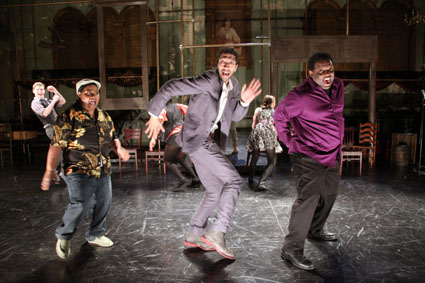Fort Greene theater group tackles Brooklyn’s conflicted history of slavery

IMG_0112-2.jpg
By Zach Campbell
Brooklyn Daily Eagle
Nineteenth-century Brooklyn, still mainly agricultural, was one of the world’s sugar capitals. The western waterfront was lined with refineries, and the then-third-largest city in the country was exporting the sweet gold all over the world. While much of the North was aligned against slavery, Brooklyn still had extensive economic ties to the South and the Southern cash-crop economies. Brooklyn was built on the business of slavery.